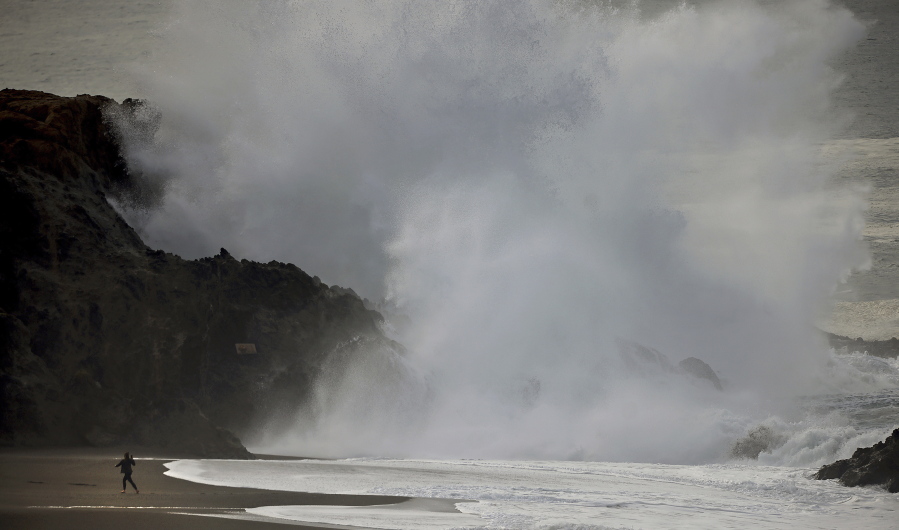BELLINGHAM — Washington has the second-highest seismic risk in America, according to the Washington State Department of Natural Resources, and although tsunamis are rarer than earthquakes, they have happened in Washington and will likely happen again.
Washington is at a higher risk for tsunamis and earthquakes because of the Cascadia Subduction Zone, a 621-mile fault that runs from Vancouver Island, B.C. to northern California. The zone produces large earthquakes and is expected to produce larger earthquakes in the future, according to the city of Bellingham Emergency Management.
The Washington State Department of Natural Resources recently tweeted a simulation of how an earthquake could affect the Puget Sound, sending 42 feet waves against the Seattle Great Wheel and even reaching TMobile Park:
For areas protected inside the Puget Sound like Bellingham, a tsunami from the subduction zone would take about two hours to hit land, as the rest of the Puget Sound protects the inward coast from more sudden waves. But if a tsunami is sourced from a closer earthquake it could be only minutes until the first waves hit the shore.
But if you only had two hours, would you know what to do before a tsunami? Here are a few things you should know.
Tsunami causes
Tsunamis are commonly caused by earthquakes, but can also be caused by landslides, weather conditions, space objects such as meteorites and volcanic activity, according to the Washington State Department of Natural Resources.
Tsunami warning signs
Large earthquakes are warning signs of incoming tsunamis, and the Washington State Department of Natural Resources says if you feel the ground shaking, immediately evacuate inland or to higher ground.
Tsunami sirens are also placed across 121 locations on the inner and outer coastlines of Washington state, that have audible sirens as well as a verbal warning to evacuate. The Washington State Emergency Management Division has a complete map of sirens across Washington’s coast as well as playable audio of what a tsunami siren warning sounds like so you can be prepared.
The National Oceanic and Atmospheric Administration also posts tsunami warnings online and shows active earthquakes across the country.
Washington state is also monitored by the National Tsunami Warning Center 24 hours a day, seven days a week in order to warn citizens of earthquakes and potential tsunamis. Tsunami warnings are through the Emergency Alert System that citizens can subscribe to receive texts message, email or phone notification tsunami warnings. Tsunami warnings are also available through the radio, television and internet. The Washington State Department of Natural Resources recommends citizens contact their local emergency managers to ask about tsunami alert information in their area.
There are multiple types of tsunami alerts including a tsunami warning, advisory, watch and information statement. If a tsunami warning is issued, evacuate immediately. A tsunami advisory advises citizens to stay away from the shore. A tsunami watch advises citizens to prepare for possible evacuation and watch local alerts in case of an emergency. A tsunami information statement requires no action but is a simple warning that a tsunami may eventually come.
Where to evacuate
If a tsunami is coming, move inland and to higher ground at least 50 feet above sea level.
The Washington State Department of Natural Resources has collected evacuation maps and tsunami information brochures for areas across the Washington coast in case of a tsunami, that includes approximate walking routes and times, police stations and fire stations you may need to access.
How to prepare for a tsunami
The Washington State Department of Natural Resources advises Washington citizens to prepare for tsunamis in multiple ways:
- Make sure you can receive tsunami warnings from multiple sources, such as a radio, text alerts or emails.
- Create and practice a plan in case of emergency with your family. Include a walking evacuation route as roads may be closed or damaged and practice walking the route.
- Create a portable emergency kit of items you, your family and even your pet will need in case of an emergency. Place emergency kits in your home, cars, workplace and in friends’ homes who live outside of a tsunami hazard zone.
- Check with your child’s school if they have a tsunami emergency plan and where you can pick up your child after an emergency.
When putting together emergency kits, the Washington Emergency Management Division advises packing two weeks’ worth of supplies including food, water, medical supplies, clothes and sanitation materials.



